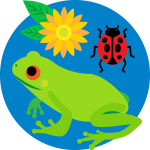An Underwater Zoo
There are different kinds of zooplankton. The ones that spend their entire lives as plankton are called "holoplankton." (The prefix "holo" means "whole.") Some holoplankton are simple one-celled organisms like ciliates and flagellates. Others are tiny shrimp-like creatures called copepods. Another type of zooplankton, called meroplankton, spends only part of its life as plankton. (The prefix "mero" means "part.") Meroplankton, like crabs, clams, worms, and fish, are babies or young animals that live like plankton until they become adults.
Description: tiny animals and animal-like organisms
Size: mostly microscopic
Habitat: oceans and freshwater around the world
Diet: phytoplankton (tiny plants) or smaller zooplankton
Characteristics: a variety of sizes, shapes, and colors
The prefix "zoo" (as in "zooplankton") means:
animal
plant
tiny
Correct!
The prefix "zoo" means "animal" in Greek. Zoology is the study of animals.
Zooplankton are so small, they mainly get around by:
drifting with water currents
moving their back fins
doing the backstroke
Correct!
Some zooplankton have ways of "swimming," but they're so small they still mainly drift with currents.
All zooplankton are made of one cell.
Fact
OR
Fiction
?
Fiction
Some zooplankton are simple one-celled animals. Others are tiny, strange-looking shrimp-like creatures.




 Biodiversity
Biodiversity
 Brain
Brain
 Genetics
Genetics
 Marine BiOLogy
Marine BiOLogy
 MicrobiOLogy
MicrobiOLogy
 PaleontOLogy
PaleontOLogy
 ZoOLogy
ZoOLogy
 AnthropOLogy
AnthropOLogy
 ArchaeOLogy
ArchaeOLogy
 Astronomy
Astronomy
 Climate Change
Climate Change
 Earth
Earth
 Physics
Physics
 Water
Water
